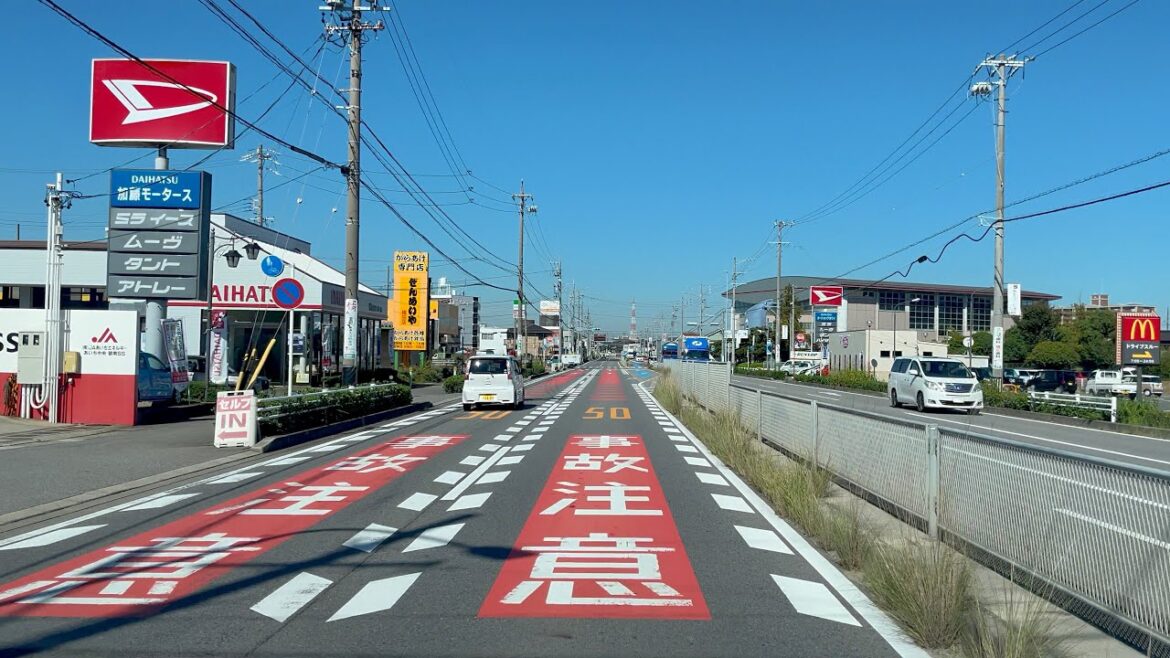#JapanRoadTrip #Tokoname #Centrair #NGO #Aichi #Japan #ASMR #4KHDR #iPhone12ProMaxVideo
DATE: October 14, 2022
LOCATION: Centrair Chubu International Airport, Tokoname City, Aichi Prefecture, Japan
TOKONAME CITY GUIDE:
Tokoname (常滑市, Tokoname-shi) is a city in Aichi Prefecture, Japan. As of 1 October 2019, the city had an estimated population of 57,872 in 24,872 households, and a population density of 1,035 persons per km². The total area of the city is 55.90 square kilometres (21.58 sq mi).
Tokoname is located on the western coast of the Chita Peninsula in southern Aichi Prefecture, facing Ise Bay.
The city has a climate characterized by hot and humid summers, and relatively mild winters (Köppen climate classification Cfa). The average annual temperature in Tokoname is 15.5 °C. The average annual rainfall is 1674 mm with September as the wettest month. The temperatures are highest on average in August, at around 27.4 °C, and lowest in January, at around 4.6 °C.
Tokoname has been associated with ceramics production since at least the Heian period, and Tokoname-yaki works from this period have been found in locations as far away as Aomori Prefecture in the north of Japan and Kagoshima prefecture in the south.
Tokoname has a mayor-council form of government with a directly elected mayor and a unicameral city legislature of 18 members. The city contributes one member to the Aichi Prefectural Assembly. In terms of national politics, the city is part of Aichi District 8 of the lower house of the Diet of Japan.
Chubu Centrair International Airport, built on an artificial island off the coast of Tokoname, opened on February 17, 2005, providing a major boost to local development.
Tokoname is a regional commercial center and has been known since the Heian period for its production of ceramics, notably Tokoname-yaki, and ceramics production remains the mainstay of the local economy. One of the main producing companies is INAX.
About 60 climbing kilns formerly operated, most of which were constructed starting in the Meiji era. The chimneys became a landmark of the town, but many were closed and taken down after the Second World War as production methods modernised and burning of ovens was regulated by the authorities to protect the air quality. The Tōei Kiln (陶栄窯) is a climbing kiln (nobori-gama) that was constructed in 887 and used until 1974. It is the largest climbing kiln existing in Japan. It was designated as an Important Tangible Cultural Property by the government in 1982. It has eight firing chambers running a 17° incline and ten chimneys of varying height.
With its long coastline, commercial fishing also plays an important role in the local economy.
ABOUT Chubu Centrair International Airport:
Chubu Centrair International Airport (中部国際空港, Chūbu Kokusai Kūkō) (IATA: NGO, ICAO: RJGG) is an international airport on an artificial island in Ise Bay, Tokoname City in Aichi Prefecture, 35 km (22 mi) south of Nagoya in central Japan.
Centrair is classified as a first-class airport and is the main international gateway for the Chubu (“central”) region of Japan. The name “Centrair” (セントレア, Sentorea) is an abbreviation of Central Japan International Airport, an alternate translation used in the English name of the airport’s operating company, Central Japan International Airport Co., Ltd. (中部国際空港株式会社, Chūbu Kokusai Kūkō Kabushiki-gaisha). 10.2 million people used the airport in 2015, ranking 8th busiest in the nation, and 208,000 tons of cargo was moved in 2015.
The northern side of the terminal holds domestic flights, while the southern side holds international flights, each with dedicated ticket counters, security checkpoints and baggage carousels, and for international flights, immigration and customs facilities. Arrivals are processed on the second floor, and departures on the third. The lower level is used for maintenance, catering, and other ground operations, as well as for passenger buses to hardstands in the middle of the airport ramp. There are thirteen gates for domestic flights (including three bus gates), and fourteen for international flights (including three bus gates). Terminal 2 is a domestic and international terminal for budget airlines, with 11 gates for international flights and 9 gates for domestic flights.


1 Comment
hello i am new as a subscriber
I see you from Argentina a greeting, from here.
thank you!